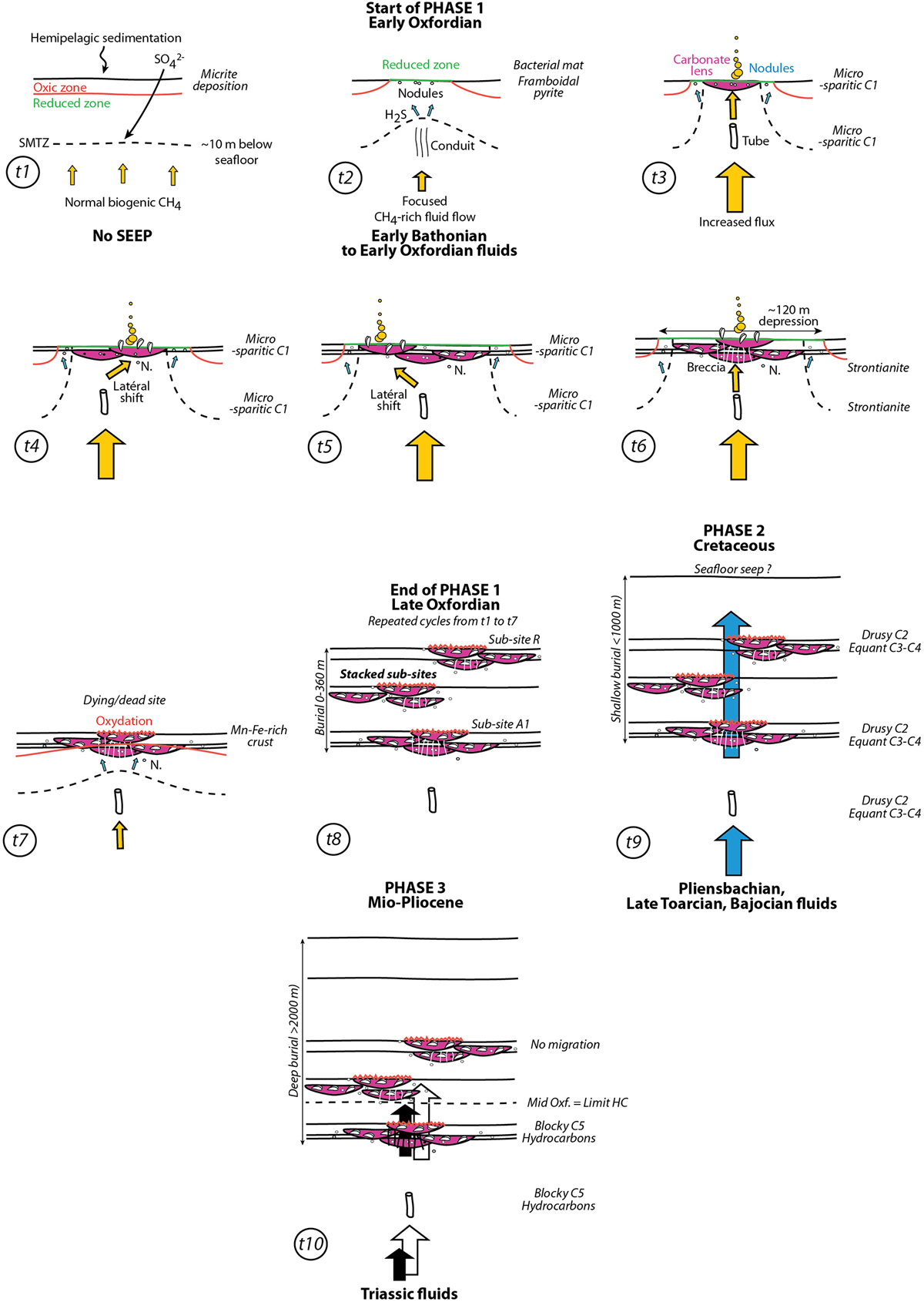Fig. 15

Download original image
Model of formation of a pockmark integrating three main phases of fluid migration. The first phase started on Early Oxfordian, remobilizing biogenic fluids from the local host formations, and ended on Late Oxfordian with sub-site R. The second phase corresponds to a fluid migration coming from Pliensbachian, Late Toarcian and Bajocian levels that occurred during Cretaceous (probably Early Cretaceous). The last phase is related to bitumen-bearing fluids that were expelled along faults during the regional salt diapir rising dated of Mio-Pliocene in the SE basin of France.
Current usage metrics show cumulative count of Article Views (full-text article views including HTML views, PDF and ePub downloads, according to the available data) and Abstracts Views on Vision4Press platform.
Data correspond to usage on the plateform after 2015. The current usage metrics is available 48-96 hours after online publication and is updated daily on week days.
Initial download of the metrics may take a while.




